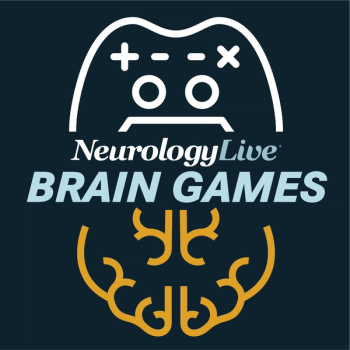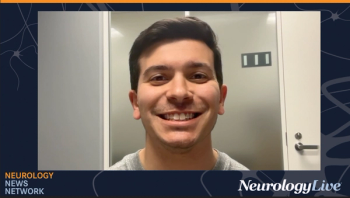
Vibrance-3: Study Design and Methods for a Phase 2, Randomized, Placebo Controlled, Parallel-Group Study Evaluating the Safety and Efficacy of ALKS 2680 in Patients With Idiopathic Hypersomnia
In this segment, Eric Olson, MD, and Anita Shelgikar, MD, discuss the design of the Vibrance-3 trial, a phase 2 study of the orexin-2 receptor agonist ALKS 2680 in patients with idiopathic hypersomnia. [WATCH TIME: 4 minutes]
Episodes in this series

WATCH TIME: 4 minutes
In this special report series from NeurologyLive, leading sleep medicine experts Eric Olson, MD, and Anita Shelgikar, MD—president-elect of the American Academy of Sleep Medicine—offer their perspectives on six late-breaking presentations from the
Throughout the series, the discussion covers a range of pressing topics, from cardiovascular safety and high-dose efficacy of low-sodium oxybate to investigational therapies like TAK-861 and ALKS 2680. The panel also unpacks trends in prescribing behavior and the influence of social determinants of health, offering a comprehensive look at the evolving treatment landscape for central disorders of hypersomnolence.
In this episode, the panelists cover the Vibrance-3 study, which is evaluating three doses of ALKS 2680 (Alkermes) in patients with idiopathic hypersomnia. The duo reflect on the trial’s endpoints, its focus on a novel orexin-2 mechanism, and the broader implications for treating central disorders of hypersomnolence. They also explore open questions around safety, combination therapy use, and how subjective versus objective measures will shape the clinical story as results emerge.
Transcript edited for clarity.
Eric Olson, MD: One of the abstracts presented at the meeting was from the Vibrance-3 study. This is a phase 2, randomized, placebo-controlled, parallel-group study evaluating the safety and efficacy of different doses of a drug called ALKS 2680—an oral selective orexin-2 receptor agonist. It’s a potentially exciting new treatment option for patients with narcolepsy and idiopathic hypersomnia.
This drug is being developed by Alkermes, and Vibrance-3 specifically focuses on its use in idiopathic hypersomnia. The study evaluated three doses—10 mg, 14 mg, and 18 mg—over an eight-week treatment period following a two-week washout. The trial plans to enroll 96 patients with idiopathic hypersomnia, randomizing them to placebo or one of the three doses. This complements ongoing studies of ALKS 2680 in patients with narcolepsy type 1 and type 2.
The primary endpoint is change in Epworth Sleepiness Scale (ESS) score, and the secondary endpoint is change in the Idiopathic Hypersomnia Severity Scale. While results are still pending, I find this study exciting because idiopathic hypersomnia often resists traditional alerting agents, so a novel mechanism like an orexin agonist is promising.
Anita Shelgikar, MD: Thanks for that summary, Eric. I share your excitement—this is a novel compound with a novel mechanism, which the field has really been waiting for. We know about orexin’s critical role in regulating wakefulness, and it’s exciting to see therapies that directly target this neuropeptide.
I also think it’s important to consider how orexin function varies across the hypersomnolence spectrum. It plays a clear role in narcolepsy type 1, but its role in type 2 or idiopathic hypersomnia isn’t as well understood. So seeing how an orexin agonist performs across these populations will be very informative.
Eric Olson, MD: Agreed. One challenge will be reimbursement—whether this will be covered once approved. But more treatment options are always welcome. I also wonder about the use of subjective endpoints like the ESS in these trials. While objective measures like MSLT or MWT are ideal, practically speaking, ESS makes a lot of sense as a primary measure.
Anita Shelgikar, MD: Yes, and as this moves closer to clinical use, we’ll want more data on whether it can be safely used alongside other alerting medications. Also, can it be used across different age groups? There are still a lot of questions, but it’s a promising start.
Eric Olson, MD: Looking at the abstract details, they do plan to monitor safety closely—including adverse events, lab assessments, vital signs (particularly blood pressure), ECGs, and suicide severity rating scales. And in a small group, they’ll be using MWT sessions, which is exciting. That could give us some objective data to pair with the ESS scores.
REFERENCE
1. Plante D, Grunstein R, Plazzi G, et al. Vibrance-3: Study Design and Methods for a Phase 2, Randomized, PlaceboControlled, Parallel-Group Study Evaluating the Safety and Efficacy of ALKS 2680 in Patients With Idiopathic Hypersomnia. Presented at: 2025 SLEEP Annual Meeting; June 8-11; Seattle, WA. Abstract LBA 1661.
Newsletter
Keep your finger on the pulse of neurology—subscribe to NeurologyLive for expert interviews, new data, and breakthrough treatment updates.
































